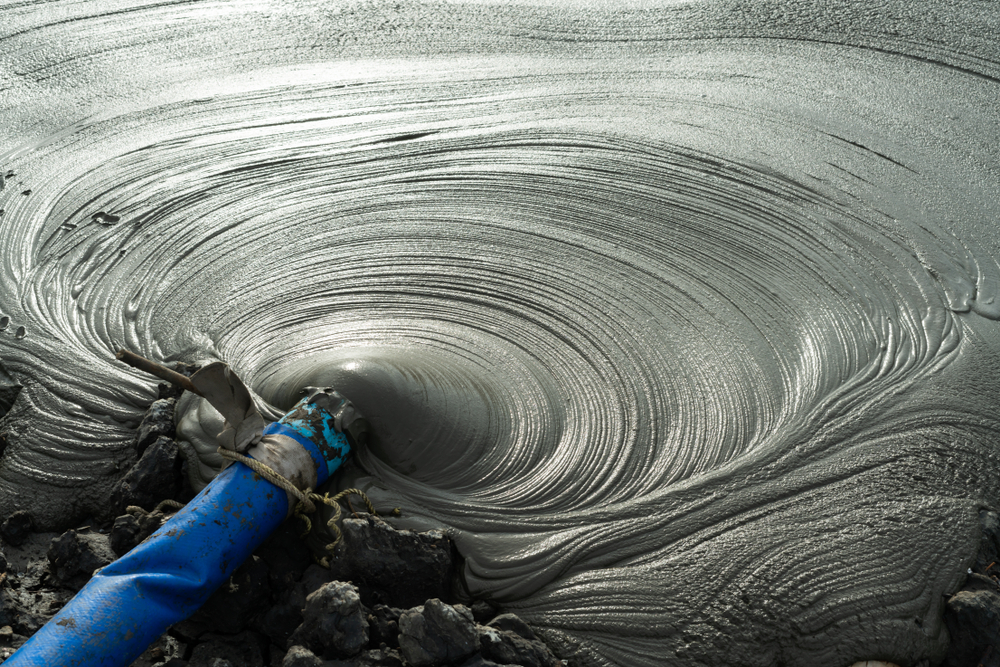EN 14130 Clay and Barite Quality in Drilling Muds Test
The EN 14130 standard is pivotal for ensuring the quality of clay and barite used in drilling muds within the oil and gas sector. This test is crucial as it directly impacts the performance, stability, and safety of drilling operations. Clay particles play a critical role by providing viscosity and weight to the fluid while maintaining the wellbore's integrity. Barite contributes significantly to the mud's density, which is essential for controlling pressure during drilling.
The testing procedure outlined in EN 14130 involves several steps that ensure accurate results. Initially, the specimen must be prepared carefully according to ISO standards. This includes precise drying and grinding procedures to achieve a consistent particle size distribution. The test itself typically comprises gravimetric analysis for moisture content, particle size distribution measurement using laser diffraction or sieving methods, and specific gravity determination with pycnometers.
For clay samples, the focus is on identifying and quantifying various clay minerals present in the specimen. This includes illite, chlorite, kaolinite, and montmorillonite content, which are critical for understanding the rheological properties of the drilling mud. The presence of these minerals can significantly influence the fluid loss characteristics and filter cake formation during drilling operations.
The EN 14130 standard also covers the testing of barite for purity and specific gravity, ensuring that it meets the required specifications to enhance the density of the drilling mud. Barite impurities such as sulfide minerals must be minimized to prevent potential reactions in the wellbore, which could lead to corrosion or other undesirable effects.
The significance of this test cannot be overstated, especially given the environmental and safety regulations governing the oil and gas industry. By adhering to EN 14130, laboratories can ensure that drilling muds are optimized for performance while minimizing adverse impacts on the environment and personnel health.
Environmental and Sustainability Contributions
The use of high-quality clay and barite in drilling muds not only enhances operational efficiency but also contributes positively to environmental sustainability. By ensuring the purity and quality of these materials, EN 14130 helps reduce the risk of contamination and waste generation during drilling operations.
Clay minerals used in drilling fluids are natural resources that can be managed sustainably if sourced responsibly. Proper testing ensures that only high-quality clay is used, minimizing the extraction of lower-grade material, which would otherwise lead to greater environmental impact. Similarly, barite, though non-renewable, can be recycled and reused effectively if its quality is assured through rigorous testing.
The reduction in waste generation from drilling muds also contributes to sustainability efforts. By optimizing the use of clay and barite according to EN 14130 standards, the volume of waste generated can be minimized, thereby reducing the environmental footprint of oil and gas operations.
Competitive Advantage and Market Impact
- Precise control over drilling mud performance leading to enhanced operational efficiency.
- Meeting stringent quality standards ensures compliance with international regulations, thus reducing legal risks.
- Achieving optimal density and viscosity of the mud for better wellbore stability.
- Reduction in waste generation through optimized material use, enhancing sustainability credentials.
The ability to provide accurate EN 14130-compliant results positions laboratories as trusted partners for quality assurance in the oil and gas sector. This not only enhances their reputation but also opens doors to lucrative contracts with major oil companies that prioritize quality and compliance.
Use Cases and Application Examples
| Use Case/Application Example | Description |
|---|---|
| Clay Mineral Identification in Drilling Mud | Determining the presence of specific clay minerals such as illite, chlorite, kaolinite, and montmorillonite to understand rheological properties. |
| Barite Purity Testing | Evaluating barite purity for density enhancement in drilling muds without introducing impurities that could cause reactions or corrosion. |
| Mud Density Optimization | Ensuring the correct specific gravity of barite to achieve optimal mud weight, crucial for pressure control during drilling operations. |
| Filter Cake Formation Analysis | Evaluating how clay content affects filter cake formation and fluid loss characteristics in the wellbore. |
The EN 14130 test results are indispensable for optimizing drilling mud formulations. They help in selecting the right type of clay and barite, ensuring that the drilling process is both efficient and environmentally responsible.





